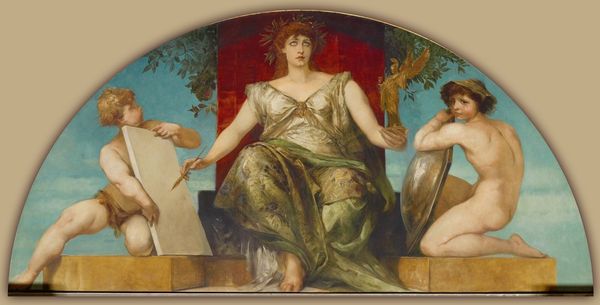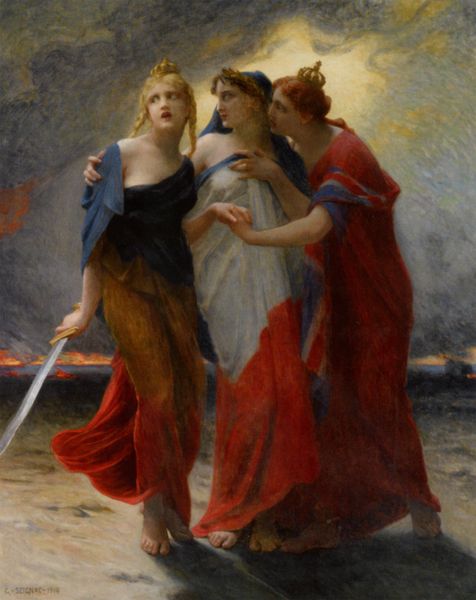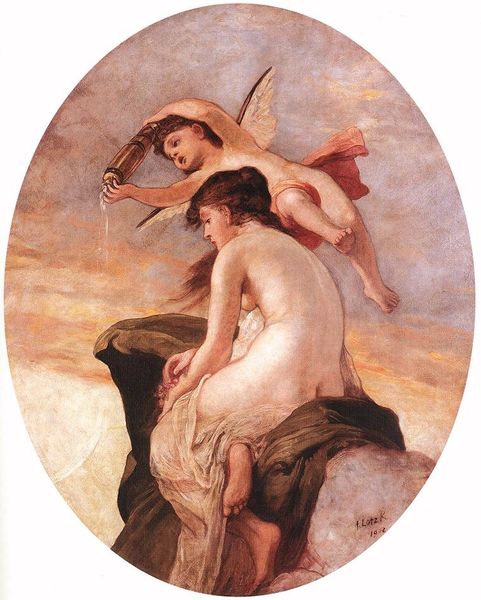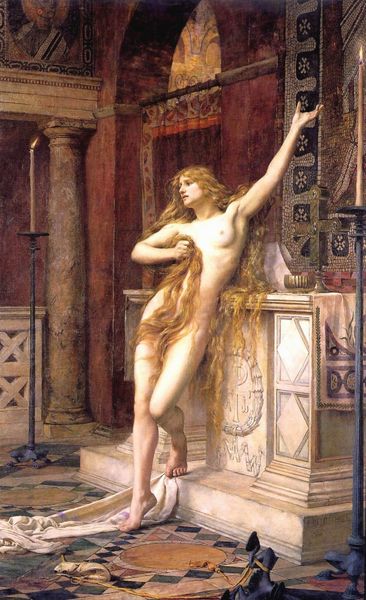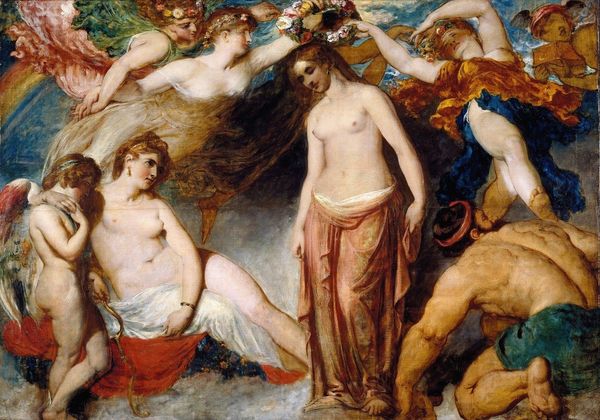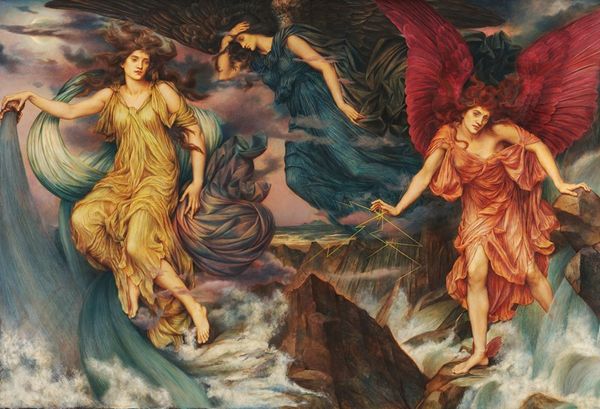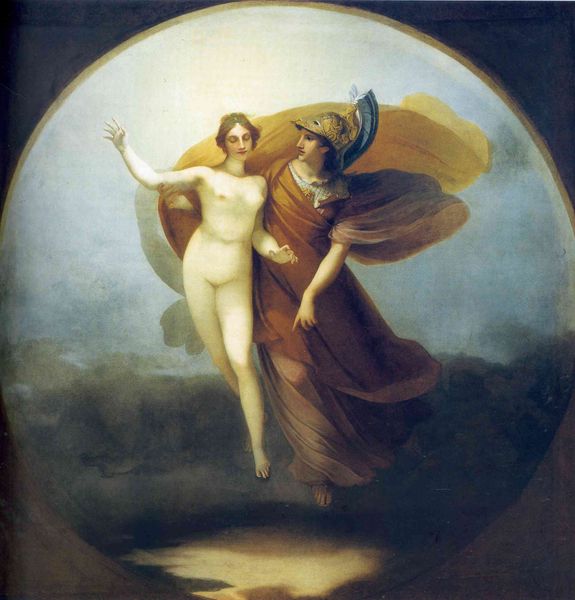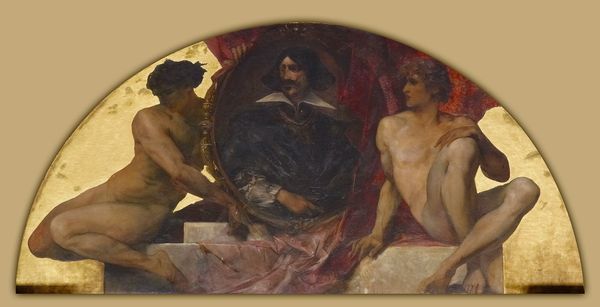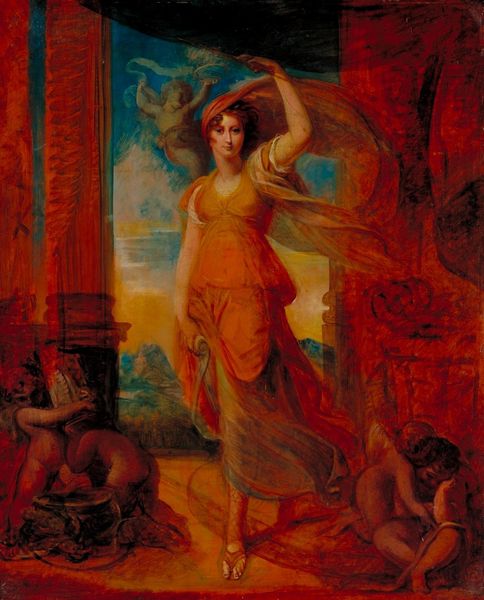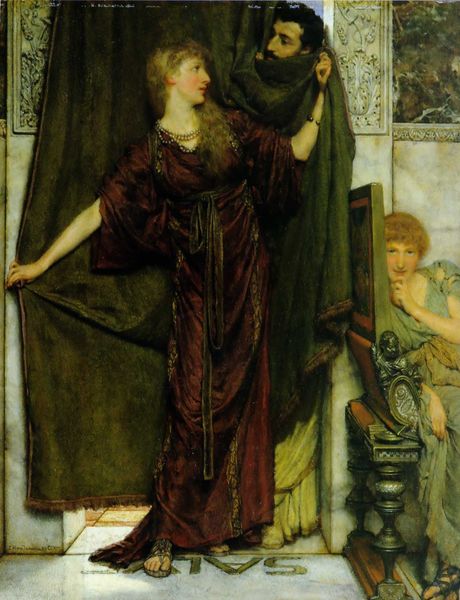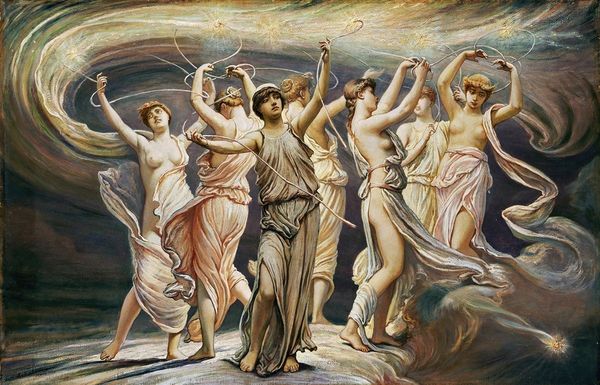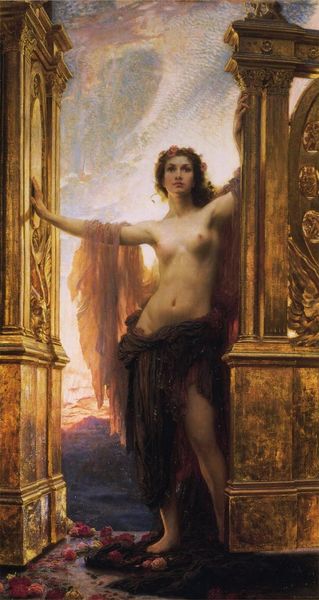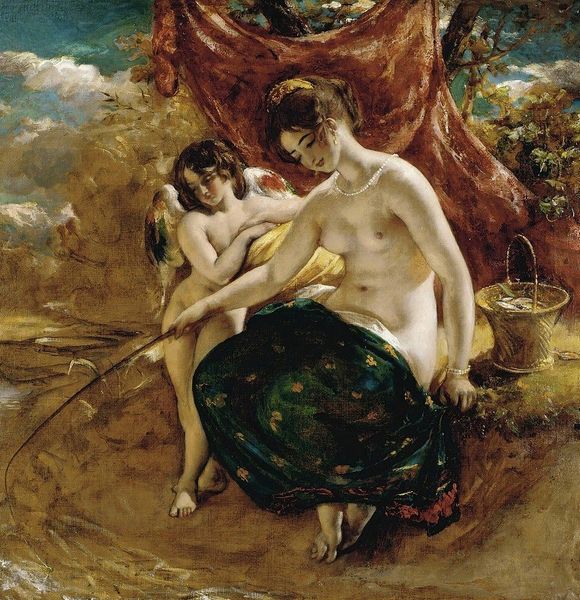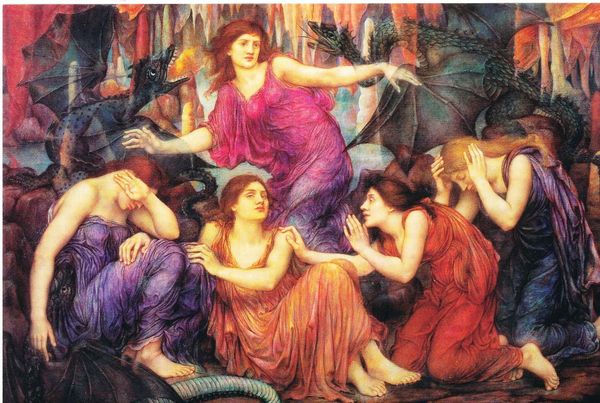
Copyright: Public Domain: Artvee
Hans Makart painted this "Allegory of Religious and Profane Painting" in the late 19th century, and it immediately strikes us with its composition; a central female figure flanked by two cherubic forms. Makart uses the semi-circular shape of the painting to frame a symbolic narrative. The central figure, draped in rich fabrics, holds aloft sheaves of wheat, symbolizing abundance and nature. On either side, we see kneeling figures holding canvases, perhaps representing religious and secular art. This arrangement establishes a visual structure that invites us to contemplate the relationships between the sacred and the profane. Makart’s use of form extends into a dialogue with the viewer, encouraging an interpretation of art's role within a broader cultural discourse. The artwork destabilizes our understanding of the binary opposition between religious and secular art. Instead, Makart suggests a spectrum where each form influences and enriches the other. By visually combining these elements, the painting challenges fixed meanings.
Comments
No comments
Be the first to comment and join the conversation on the ultimate creative platform.
